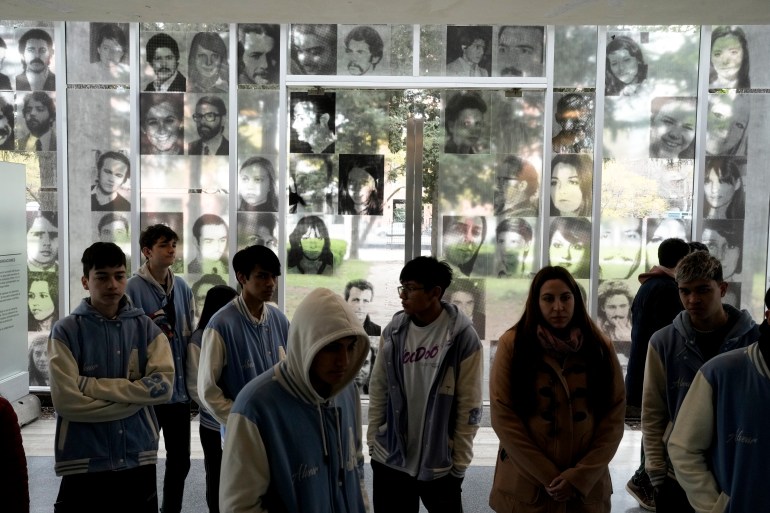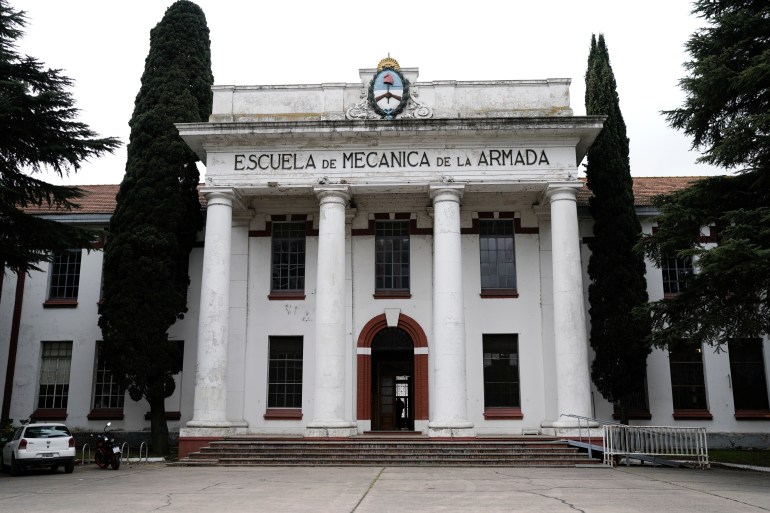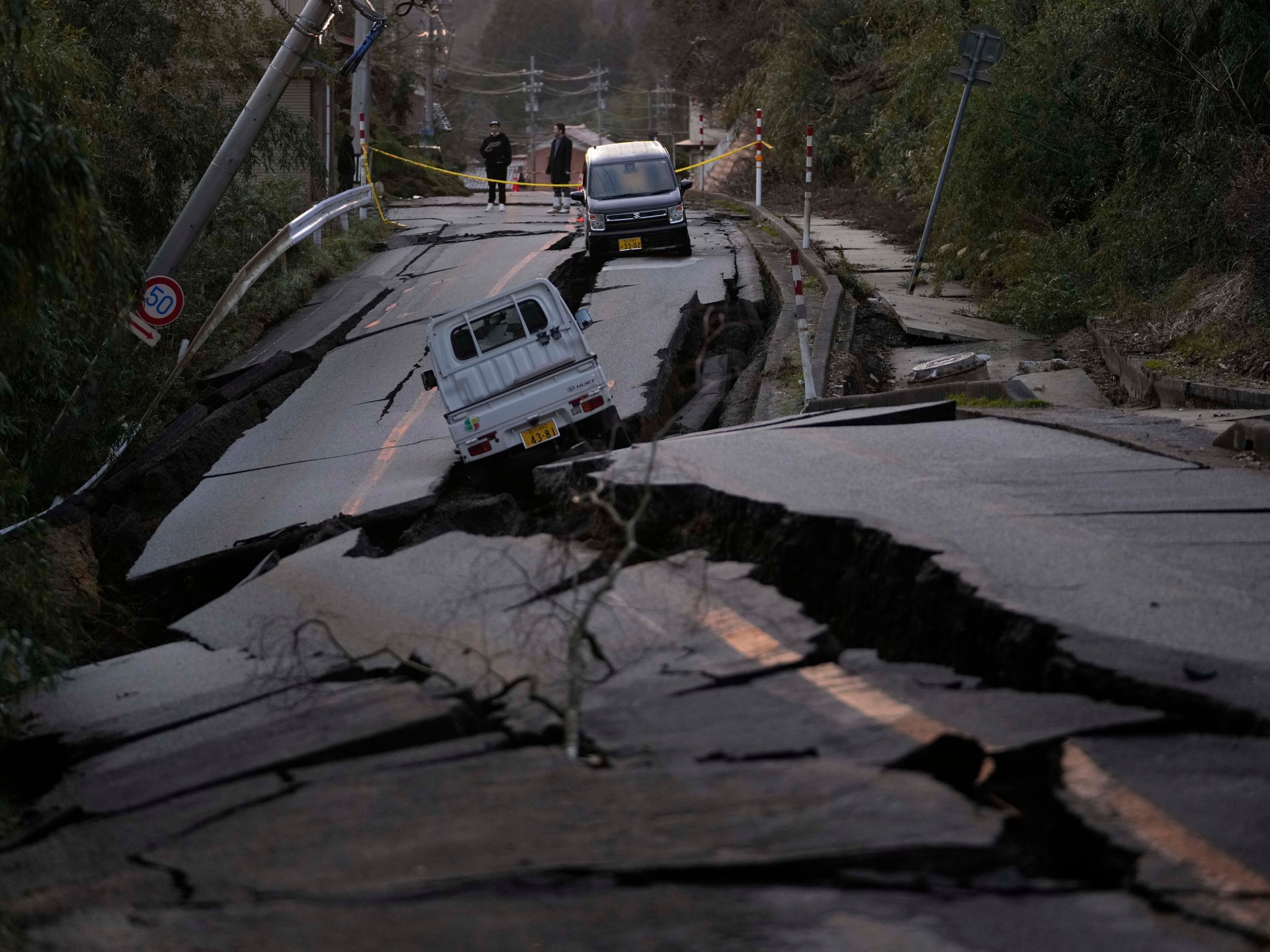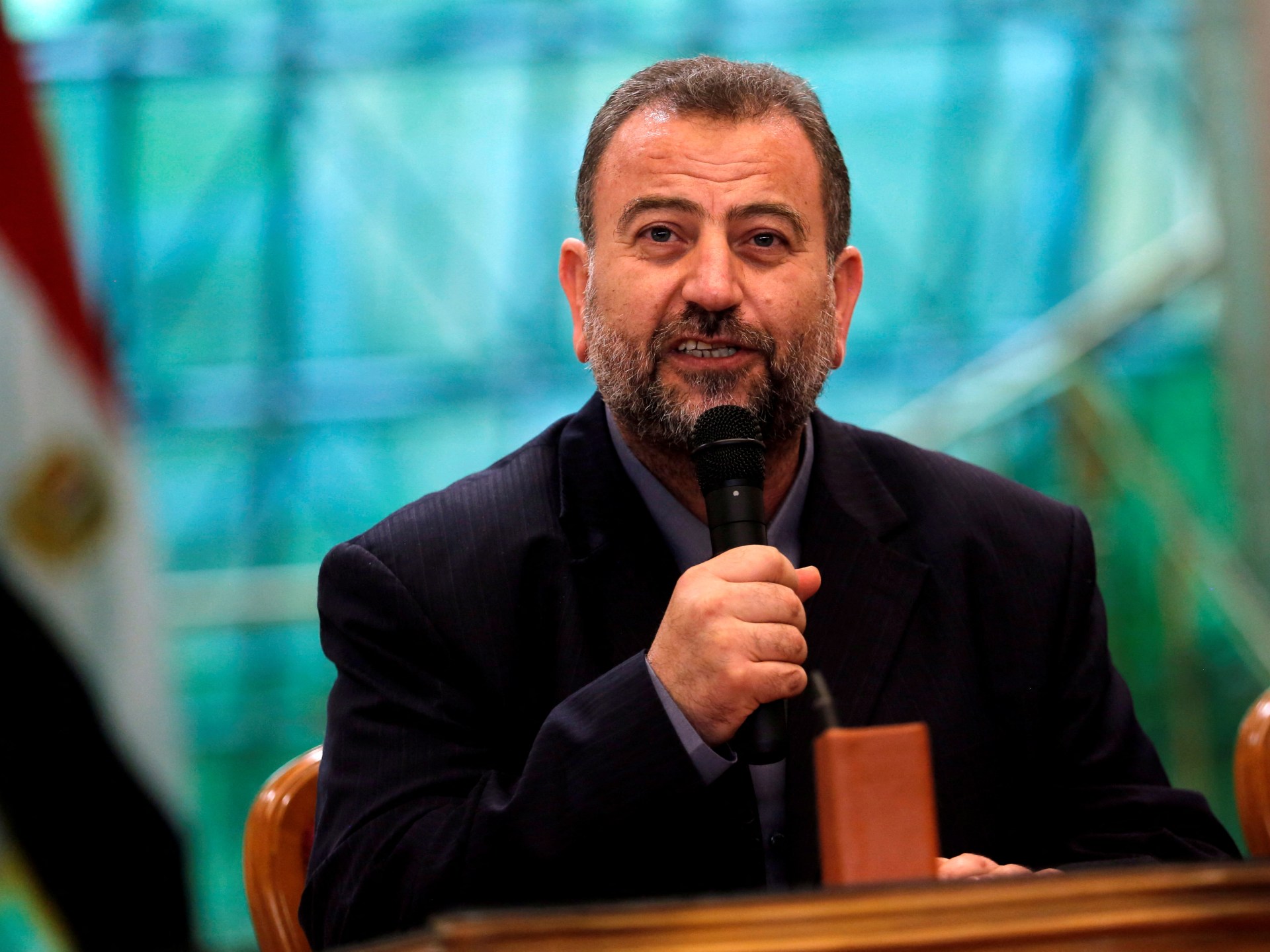Published On 19 Sep 2023
Some 5,000 people disappeared behind its walls. Many were never seen again.
Now, Argentina’s Navy School of Mechanics (ESMA) — a military school turned secret detention centre — has been named a United Nations World Heritage site in an effort to preserve its grisly history.
“The Navy School of Mechanics conveyed the absolute worst aspects of state-sponsored terrorism,” President Alberto Fernández told the UN Educational, Scientific and Cultural Organization (UNESCO) in a video message on Tuesday.
He thanked UNESCO for designating ESMA as a heritage site. “Memory must be kept alive,” Fernández said, referencing the “horrors” experienced at the former school.
In 1976, a military group overthrew President Isabel Perón, beginning a period of dictatorship that stretched through to 1983.
Under its leadership, widespread human rights abuses took place, as military leaders attempted to stamp out dissent, activism and left-wing political views.
As many as 30,000 people are believed to have lost their lives, with many of their fates still unknown. They simply disappeared in military custody and were never heard from again.
Up to 340 detention centres cropped up across the country. ESMA, however, was one of the earliest, with prisoners transferred there in the first days of the coup.
It would also become one of the largest such facilities in Argentina. Located in the capital Buenos Aires, the detention centre converted the school’s layout into a site of torture. Only about 200 prisoners survived.
 Visitors at the ESMA Museum and Site of Memory look at photos of prisoners who disappeared under Argentina’s dictatorship from 1976 to 1983 [File: Rodrigo Abd/AP Photo]
Visitors at the ESMA Museum and Site of Memory look at photos of prisoners who disappeared under Argentina’s dictatorship from 1976 to 1983 [File: Rodrigo Abd/AP Photo]
ESMA even contained a maternity ward, where pregnant detainees saw their children taken away from them as soon as they gave birth. These children were often adopted into families aligned with the dictatorship.
Military leaders took pains to conceal the crimes unfolding at ESMA, both during and after the dictatorship.
For example, when international observers arrived in 1979 to investigate human rights claims, workers at ESMA removed the staircase leading down to the basement, where much of the torture took place. They even built a wall to disguise the stairwell.
Decades later, in 2007, ESMA would be reimagined as a site of remembrance, reopening to the public to tell the story of the human rights abuses that took place on its grounds.
Just this year, the ESMA museum acquired an aeroplane used to murder detainees held at the site, in a practice called “death flights”. Prisoners were drugged and thrown — often alive — into the sea mid-flight, as a form of execution.
Museum organisers hope the plane and similar displays will help future generations remember the tragedy that unfolded at ESMA — and underscore the importance of democracy.
 ESMA was designated as a World Heritage site at UNESCO’s 45th session in Riyadh on September 19 [Rodrigo Abd/AP Photo]
ESMA was designated as a World Heritage site at UNESCO’s 45th session in Riyadh on September 19 [Rodrigo Abd/AP Photo]
UNESCO is currently holding its 45th extended session in Riyadh, Saudi Arabia, where it is adding more sites to its World Heritage list. Indigenous ceremonial and burial mounds in Ohio in the United States were among the new additions announced on Tuesday.
But ESMA’s inclusion on the World Heritage list underscores its importance at a time when some high-profile politicians in Argentina have been accused of denying the brutality of the military dictatorship.
Victoria Villarruel, the vice presidential candidate to leading presidential contender Javier Milei, is among the politicians criticised for downplaying the violence during that time.
Milei, a right-wing populist, emerged as the frontrunner in August’s primary elections, surging past establishment candidates.
But Argentina’s Human Rights Secretary Horacio Pietragalla Corti said UNESCO’s decision serves as a rebuke to those who seek to ignore the human rights abuses that took place at sites like ESMA.
“This international recognition constitutes a strong response to those who deny or seek to downplay state terrorism and the crimes of the last civil-military dictatorship,” Corti said.
President Fernández likewise applauded the UNESCO designation as a bulwark against denialism as he took the stage at the UN General Debate in New York on Tuesday.
“By actively preserving memory that the deniers want to conceal, we will make sure that this pain will never again be repeated,” he said. “In the face of these crimes against humanity, our solution is not revenge but justice, precisely because we know the horror represented by the disappearance of 30,000 human beings.”
Source
:
Al Jazeera and news agencies

 Movie
Movie 7 months ago
85
7 months ago
85 






![Presidents Day Weekend Car Sales [2021 Edition] Presidents Day Weekend Car Sales [2021 Edition]](https://www.findthebestcarprice.com/wp-content/uploads/Presidents-Day-Weekend-car-sales.jpg)



 English (United States)
English (United States)